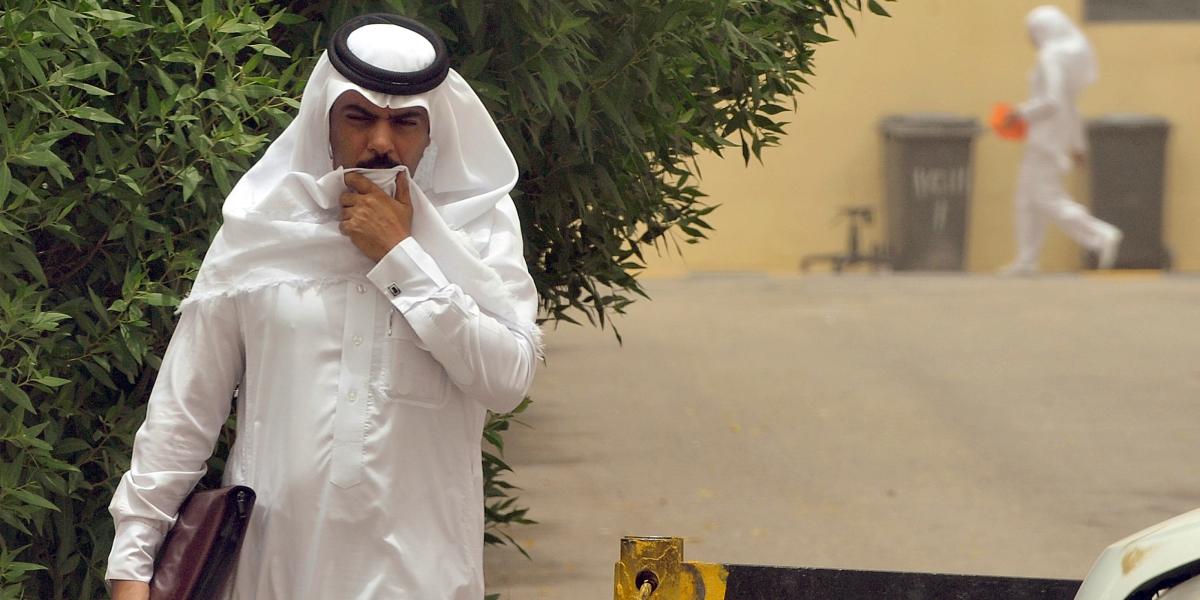Untangling the MERS Outbreak
Trish Perl had just picked up a colleague at the Baltimore train station when her cell phone rang. Saudi Arabia’s deputy minister of health was on the line.
He wanted to know if Perl, MD, MSc, senior epidemiologist for the Johns Hopkins Health System, could travel to Saudi Arabia to assist with an investigation of a hospital-based MERS (Middle East respiratory syndrome coronavirus) outbreak.
Perl, who holds joint appointments in Medicine and Epidemiology, arrived four days later, on May 11, and working with colleagues from Toronto’s Mount Sinai Hospital and the University of Colorado, Denver, assembled a who-what-when-and-where database to determine how the virus spread through four hospitals in eastern Saudi Arabia, infecting 23 people and killing 15, between April 1 and May 23.
Back in Baltimore, Perl and colleagues worked with Epidemiology associate professor Derek Cummings, PhD, to untangle the disparate data strands and reconstruct the transmission network of the first large MERS cluster since the virus was identified in September 2012.
The resulting report, published June 19 in the online New England Journal of Medicine, produced early answers to fundamental questions about MERS, which has now infected 114 people and killed 54, with most cases in the Middle East. MERS has also been confirmed in Europe and Tunisia.
Investigators into the Saudi Arabia outbreak determined that the infection spread easily within hospitals, from person to person in dialysis facilities, intensive care units and inpatient wards, and in transport between hospitals.
“I think that one of the most important things to come out of this is that we’re dealing with a coronavirus infection that’s very similar to SARS,” says Perl, referring to severe acute respiratory syndrome, which caused more than 750 deaths in a 2003 epidemic.
The findings emerged from the close collaboration between Cummings and his on-the-ground investigators in Saudi Arabia, with the two camps communicating daily.
Perl and her colleagues dug into hospital patient records and ministry of health reports to collect the details—room numbers, bed assignments, patient/health care worker interactions—that Cummings required to track the outbreak through space and time.
“The tricky part is figuring out the specifics on where people were and who they could have interacted with,” says Cummings. With the data in hand, he was able to calculate an incubation period of 5.2 days and a serial interval [the time between cases in a transmission chain] of 7.6 days. The information is critical to establish protective measures in a disease outbreak, including quarantine guidelines.
Perl has briefed the CDC on the Saudi Arabia investigation and continues to monitor MERS developments globally.
With the exception of the Saudi Arabia outbreak, MERS cases have tended to be sporadic in nature, and a WHO committee ruled in July that MERS is not a global health emergency. At this point, says Perl, it’s unclear why MERS has not spread widely in the general population.
Much about the virus remains unknown—including the extent of transmission in communities and whether seasonal variations affect the virus’s ability to spread—and vigilance is necessary, according to Perl and Cummings. A virus can “sputter along in fits and starts,” before it becomes a significant disease risk, says Cummings.
“With any of these novel pathogens that are emerging, our resources are much better spent to stop them at the earliest stages,” he says. “If they start to spread widely, then you have a much larger task ahead.”
